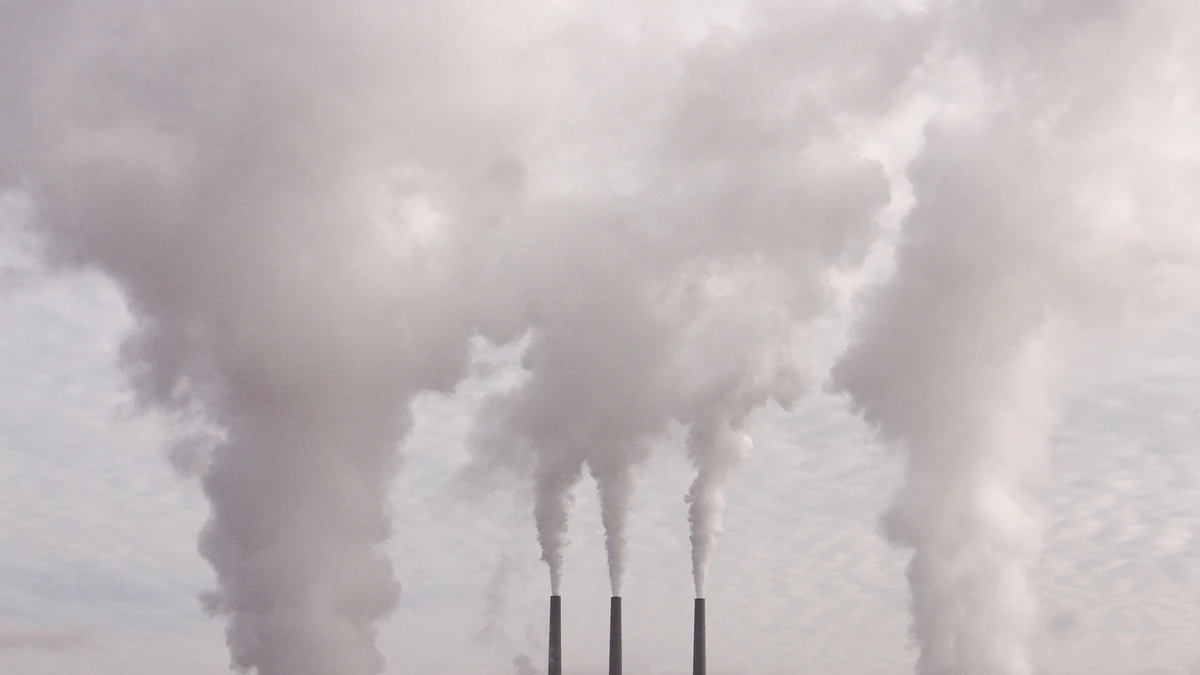
Despite the climate warnings from scientists, the total CO2 emitted into the atmosphere, far from being reduced, will reach a new record in 2023, with 40.9 billion tons, according to data from the new annual report published by the Global Carbon Project, within the framework of COP28.
According to the data, carbon dioxide (CO2) emissions from fossil fuels, the main source of the global greenhouse effect causing the climate crisis, are expected to have increased by 1.1 percent compared to 2022, with a new recordreaching 36.8 billion tons at the end of 2023. Adding CO2 emissions of fossil origin together with those from changes in land use, the total will rise to 40.9 billion tons this year, according to forecasts for the closing of the year.
The global figure is higher than that of 2022, in which 40.6 billion tons of CO2 would have been emitted, and confirms the distance that persists with the global climate objectives for their fulfillment, which would have to be “urgent”, according to the report . Although with great uncertainties, everything indicates that, with the current rate of emissions, There would be a 50% chance that, in about seven years, global warming would exceed the normalized threshold of 1.5°C above pre-industrial thermal levels.
Although around half of the CO2 continues to be absorbed by the terrestrial “sinks” that are forests, and by oceanic ones, the rest of the emissions remain in the atmosphere and causes climate change. According to the figures, Fossil CO2 emissions are declining in some geographic regions, including Europe and the United States, but are generally increasing globally.
It seems inevitable that we will exceed the 1.5°C target of the Paris Agreement
Scientists warn that Global action to reduce fossil fuels is not fast enough to avoid “dangerous” climate change. Emissions from land use change (such as deforestation) are expected to decrease “slightly”, but would not possibly be enough to offset levels of reforestation and afforestation (new forests).
“It seems inevitable that we will exceed the 1.5°C objective of the Paris Agreement,” warns the professor Pierre Friedlingstein, from Exeter’s Global Systems Institute and director of the report. Given the situation, the climate summit that is being held until the 12th in Dubai will have to agree on “rapid cuts in fossil emissions” to prevent the planet’s temperature from exceeding these levels or at least maintain the objective of not exceeding 2°C. increase compared to the pre-industrial era. “All countries need to decarbonize their economies faster than currently to avoid the worst impacts of climate change,” according to the expert.
The report includes key data confirming that Regional trends in the climate fight vary greatly. Thus, according to the indicators, it is expected that CO2 emissions in 2023 will increase in India (8.2%) and China (4.0%), and decrease in the EU (-7.4%), the US (-3.0%) and the rest of the world (-0.4%). By source type, global emissions from coal (1.1%), oil (1.5%) and gas (0.5%) are expected to increase.
According to the forecasts, the average atmospheric CO2 by 2023 will be 419.3 parts per million (ppp), 51% above pre-industrial levels. According to the figures, in 2023 global CO2 emissions from forest fires have been higher than average due to an extreme fire season in Canada, with an impact between six and eight times higher than average. The levels of carbon dioxide removal with technology – excluding the removal of CO2 with natural projects such as reforestation – amount to approximately 0.01 million tons of CO2, which is more than a million times less than current fossil emissions of CO2.
The so-called ‘Global Carbon Budget’, which provides a global vision of the carbon cycle, has been prepared by researchers from the University of Exeter (United Kingdom), the University of East Anglia (UEA), the Center for International Climate Research (Norway), the Ludwig-University Maximilian of Munich and 90 other institutions around the world. This is the eighteenth edition of this report with the participation of more than 120 scientists, and will be published in the journal Earth System Science Data.
Source: Lasexta
Ricardo is a renowned author and journalist, known for his exceptional writing on top-news stories. He currently works as a writer at the 247 News Agency, where he is known for his ability to deliver breaking news and insightful analysis on the most pressing issues of the day.












